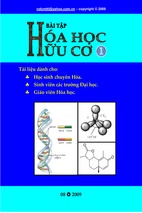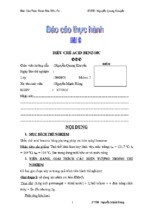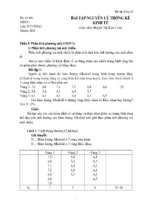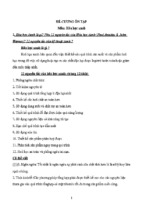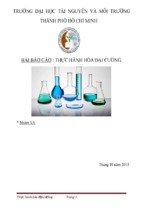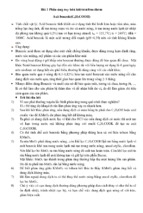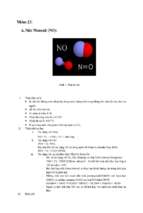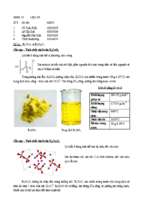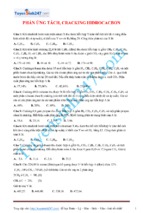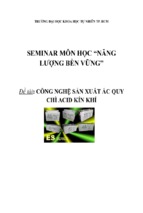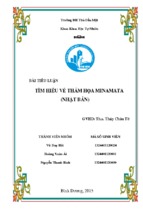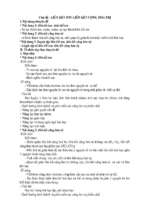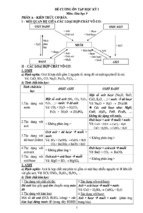COAL GASIFICATION
AND ITS
APPLICATIONS
DAVID A BELL
BRIAN F TOWLER
MAOHONG FAN
Amsterdam • Boston • Heidelberg • London • New York • Oxford
Paris • San Diego • San Francisco • Singapore • Sydney • Tokyo
William Andrew is an imprint of Elsevier
William Andrew is an imprint of Elsevier
The Boulevard, Langford Lane, Kidlington, Oxford OX5 1GB, UK
30 Corporate Drive, Suite 400, Burlington, MA 01803, USA
First edition 2011
Copyright Ó 2011 Elsevier Inc. All rights reserved.
No part of this publication may be reproduced, stored in a retrieval system or transmitted in any form
or by any means electronic, mechanical, photocopying, recording or otherwise without the prior
written permission of the publisher
Permissions may be sought directly from Elsevier’s Science & Technology Rights Department in
Oxford, UK: phone (+44) (0) 1865 843830; fax (+44) (0) 1865 853333; email: permissions@elsevier.
com. Alternatively you can submit your request online by visiting the Elsevier web site at http://
elsevier.com/locate/permissions, and selecting Obtaining permission to use Elsevier material
Notice
No responsibility is assumed by the publisher for any injury and/or damage to persons or property as
a matter of products liability, negligence or otherwise, or from any use or operation of any methods,
products, instructions or ideas contained in the material herein. Because of rapid advances in the
medical sciences, in particular, independent verification of diagnoses and drug dosages should be made
British Library Cataloguing in Publication Data
A catalogue record for this book is available from the British Library
Library of Congress Cataloging-in-Publication Data
A catalog record for this book is available from the Library of Congress
ISBN: 978-0-8155-2049-8
For information on all William Andrew publications
visit our web site at books.elsevier.com
Printed and bound in Great Britain
11 12 13 14 15 10 9 8 7 6 5 4 3 2 1
INTRODUCTION
This is a book about coal gasification and its related technologies. The relationship
between these technologies is shown in Figure 0.1. The gasification process begins with
a viable feedstock. In this book, we focus on one of those feedstocks that must go
through the gasification process, coal. The nature of coal, including its properties and
availability, are described in Chapter 1. Petcoke, petroleum coke, a solid, high-carbon
byproduct of petroleum refining, can also be gasified. Gasifiers designed for coal,
especially high temperature, entrained flow gasifiers, are used for this application.
Biomass gasification has a great deal in common with coal gasification, but biomass
gasifiers are optimized for biomass feedstock.
The product of gasification is syngas, which is primarily a mixture of carbon
monoxide and hydrogen. Most syngas, however, is not currently made by gasification,
but rather by the steam reforming of natural gas. In this process, steam and natural gas are
fed to catalyst-packed tubes, which are held inside a furnace to provide the endothermic
heat of reaction. Figure 0.1 also shows other gases, which can be blended with syngas for
further processing. One such gas under consideration is hydrogen, which can be
produced by electrolyzing water using off-peak power from a nuclear power plant. In
a few cases, carbon dioxide from an external source may supplement the carbon
monoxide in syngas.
Just as coal is not the only feedstock for gasification, gasification is not the only use of
coal. Most coal is burned to produce electric power. Chapter 2 describes a few of the
non-gasification uses of coal.
Gasification is described in Chapters 3, 4, and 5. Chapter 3 describes gasification as
a chemical reaction system. Although this chapter may look complex, our knowledge of
the chemistry of gasification is far from complete. Chapter 4 covers several gasifier designs.
These designs were selected because they are now in commercial use or development, or
because they illustrate interesting concepts. One gasification approach is sufficiently
different that it deserves its own chapter, underground coal gasification, covered in
Chapter 5. Instead of mining coal and transporting it to a gasifier, the coal is left in place
underground, and the reactant gases are brought to the coal. Deeply buried coal seams,
which are uneconomic to mine, may be exploited by underground coal gasification.
Syngas leaving the gasifier contains numerous impurities. The inorganic fraction of
the feedstock leaves as solid ash or molten slag. Ash or slag removal is usually an integral
part of the gasifier design. If the gasification occurs at relatively low temperatures, then
tar will be produced. Tar removal is also an integral part of gasifier design. Highertemperature gasifiers do not produce significant tar. The syngas also contains sulfur in the
ix
x
Introduction
hydrogen,
electric
power
ammonia,
nitrogen
fertilizers
methanol,
dimethyl ether,
hydrocarbons
substitute natural gas,
Fischer-Tropsch
hydrocarbons
Products
sequestration
steam
Syngas
processing
water gas
shift
impurity
removal
steam
reforming
gasification
Gasification
Feedstocks
CO2
removal
coal
petcoke
biomass
natural
gas
other
gas
Figure 0.1 Gasification and related technologies.
form of H2S, with lesser quantities of COS. Sulfur must be removed from syngas either
to prevent emission of SO2 when syngas is burned, or to prevent catalyst poisoning in
downstream reactors. Sulfur removal is described in Chapter 6.
Carbon dioxide removal can occur either as a part of impurity removal, or after water
gas shift, as shown in Figure 0.1. The traditional carbon dioxide removal techniques are
closely related to sulfur removal, and are described in Chapter 6. The ability to remove
carbon from syngas and sequester it in a geological formation is one of the major
attractions of coal gasification. This allows coal to be used while minimizing greenhouse
gas emissions. A major objection to this approach is that carbon capture and sequestration
are expensive. This prompted a great deal of research into new carbon dioxide separation
technologies, and which is described in Chapter 10.
Syngas contains a number of minor impurities, and one of the more significant is
mercury, a neurotoxin. Removal of mercury is discussed in Chapter 9.
For some applications, a nearly pure hydrogen stream is desired. In others, such as
methanol synthesis, a specific ratio of carbon monoxide to hydrogen is required. In either
Introduction
case, the gasifier usually produces a higher ratio of carbon monoxide to hydrogen than
desired. This ratio needs to be shifted towards a greater hydrogen content. The usual way
to do this is through the water gas shift reaction in which carbon monoxide reacts with
steam to form hydrogen and carbon dioxide, as described in Chapter 7. Hydrogen can
then be burned in a turbine to generate electric power, an application known as integrated gasification combined cycle. This is a means of producing electric power from
coal with minimal greenhouse gas emissions.
Hydrogen is also a potential transportation fuel. The usual approach is to produce
electric power from hydrogen in a fuel cell, and then use that power in an electric motor.
One of the main technical obstacles is a practical means of storing hydrogen in a vehicle.
Chapter 9 explores hydrogen storage for this application.
Nearly all synthetic nitrogen chemicals start as ammonia, synthesized from hydrogen
and nitrogen gas. Nitrogen fertilizers are, by far, the largest volume synthetic nitrogen
chemicals. Chapter 11 describes ammonia synthesis and some of the more common
nitrogen fertilizer compounds.
Methanol is a major commodity chemical made from syngas, as described in
Chapter 12. Methanol is an intermediate used to make a wide range of products. One of
these, dimethyl ether (DME), is especially interesting. DME can be used as a fuel or
converted to hydrocarbons, including gasoline and olefins for polymer production.
Chapter 13 describes the direct conversion of syngas to hydrocarbons, including
substitute natural gas (methane) and Fischer-Tropsch liquid, a synthetic crude oil. The
Fischer-Tropsch liquid is then refined to meet petroleum product specifications.
Coal is an inexpensive feedstock, but gasification-based plants tend to have very high
capital construction costs. In concept, one could build a single plant that would
incorporate all of the elements shown in Figure 0.1, but such a complex plant would be
extraordinarily expensive to build. Instead, gasification-based plants have a more limited
set of features dictated by economics and the regulatory environment.
There are two major trends that prompt current interest in coal gasification. The first
is the widely held belief that conventional petroleum supplies are declining, while
demand for transportation fuels continues to rise. This has led to heightened interest in
alternative energy supplies, including coal. The second major trend is concern about
global warming. Gasification offers a relatively cost-effective means of using coal while
minimizing greenhouse gas emissions.
xi
CHAPTER
1
The Nature of Coal
Contents
The Geologic Origin of Coal
Coal Analysis and Classification
Coal Rank
Ash Thermal Properties
Coal as a Porous Material
Spontaneous Combustion
Reserves, Resources, and Production
References
1
2
4
5
9
10
11
15
THE GEOLOGIC ORIGIN OF COAL
Coal is fossilized peat. A peat bog is a marsh with lush vegetation. Plant matter dies and
falls into the water, where partial decomposition occurs. Aerobic bacteria deplete the
water of oxygen, and bacterial metabolic products inhibit further decomposition by
anaerobic bacteria. Plant matter accumulates on the marsh bottom faster than it
decomposes, and, over a period of many years, a layer of peat forms. The peat that
became today’s coal was laid down millions of years ago.
Buried peat is converted to coal when high pressure and elevated temperature is
applied to the buried layer. This process is known as coalification. The physical and
chemical structure of the coal changes over time. As shown in Figure 1.1, the youngest
(least converted) coal is known as lignite, which can be further converted to sub-bituminous coal, bituminous coal, and finally anthracite. These coal types strongly influence the
properties and use of coal, and will be discussed further.
Peat
Lignite
Increasing
age,
conversion
Sub-bituminous
Bituminous
Anthracite
Figure 1.1 Coalification.
Coal Gasification and Its Applications.
ISBN B978-0-8155-2049-8.10001-4, doi:10.1016/B978-0-8155-2049-8.10001-4
Ó 2011 Elsevier Inc.
All rights reserved.
1
2
The Nature of Coal
Petrography is the visual inspection of a rock sample to determine the mineral types in
the sample. When applied to coal, the different coal types are known as macerals. Table
1.1 lists coal macerals, and shows how they are derived from plant material.
COAL ANALYSIS AND CLASSIFICATION
Coal is used primarily as a fuel, so its most important property is its heat of
combustion. Gross calorific value, also known as higher heating value (HHV), is determined
by measuring the heat released when coal is burned in a constant-volume calorimeter,
with an intitial oxygen pressure of 2 to 4 MPA, and when the combustion products are
cooled to a final temperature between 20 and 35� C (ASTM D 5865-04). The tests
mentioned in this book are primarily based on the American Society for Testing and
Materials (ASTM) specifications.1 Coal is a variable, widely distributed and widely
used material so a wide range of standard tests have been developed by a variety of
individuals and organizations.
Coal is a porous medium, and these pores, especially in low rank coals, can contain
substantial quantities of water even though the coal appears to be dry. The water is either
adsorbed onto hydrophilic surface sites or held in pores by capillary forces. When this
moist coal is burned or gasified, a substantial fraction of the combustion heat is required
Table 1.1 Coal macerals, based on ASTM D121-05 and ASTM D 2799-05a.1
Maceral
group
Maceral
Origin
Comments
Vitrinite
Vitrinite
Liptinite
Alginite
Cutinite
Intertite
Resinite
Sporinite
Fusinite
Inertodentrinite
Macranite
Micranite
Funginite
Secretinite
Semifusinite
Woody tissue of plants (cellulose,
lignin)
Botryoccus algae
Waxy coating (cuticle) of leaves, roots
and stems
Plant resins
Spores and pollen grains
Some structures of plant cell wall still
visible
Fragments incorporated within other
macerals.
No plant cell wall structure, larger than
10 mm
No plant cell wall structure, less than 10
mm, and typically 1 to 5 mm
Fungi
No obvious plant structure, sometimes
containing fractures, slits or notch.
Like fusinite, but with less distinct
evidence of cellular structure.
Most common maceral
Waxy, resinous
materials
Derived from strongly
altered and degraded
peat
The Nature of Coal
to vaporize water. Since the final temperature in the gross calorific value test is 20 to
35� C, most of the water is condensed, thereby recovering the heat of vaporization.
Water in the HHV test is primarily a non-combustible diluent. For example,
a Wyoming Powder River Basin coal typically has an HHV of 19.8 MJ/kg (8500
Btu/lb) and a 28% moisture level. One can then calculate an HHV value for the coal if
it is dried:
�
�
19:8 MJ=kg
MJ
Btu
¼ 27:5
11; 800
Eqn. 1.1
HHV ; dry ¼
1 � 0:28
kg
lb
If coal is burned or gasified near atmospheric pressure, then the heat of condensation
for the water may not be recovered. For example, in a coal-fired power plant, the water
contained in the coal may go up the stack as steam. In other situations, the heat of
condensation is recovered, but the value of this heat is relatively low because of its
temperature. In these cases, a better estimate of coal heat of combustion is the net calorific
value, also known as Lower Heating Value (LHV), which assumes that vaporized water
remains as steam and that the heat of condensation is not recovered. Water in the coal
reduces its heating value by its heat of vaporization, 2.395 MJ/kg water (1055 Btu/lb
water). Again, for a typical PRB coal:
19:8 MJ
MJ
kg water
� 2:395
� 0:28
kg coal
kg water
kg coal
�
�
MJ
Btu
8; 200
¼ 19:1
kg coal
lb coal
LHV ; moist ¼
Eqn. 1.2
Proximate Analysis (ASTM D 3172-89) involves a series of tests that heat and burn
coal. Moisture is measured (ASTM D 3173-03) by determining the weight loss after
coal is dried at 104 to 110 � C. Volatiles are then measured (ASTM D 3175-02) by
determining additional weight loss when coal is pyrolyzed at 950 � C. Ash is determined (ASTM D 3174-04) by the weight of inorganic materials remaining after coal
is burned. Fixed carbon is the fraction of coal that is not moisture, volatiles, or ash.
Fixed carbon, which is mostly carbon but can contain other elements represents the
combustible portion of the coal char that remains after the volatiles have been
removed.
Proximate analysis results are sometimes reported on a dry mineral matter-free basis.
Mineral matter is calculated using the following equation:
Mm ¼ 1:08A þ 0:55S
Where: Mm ¼ percent mineral matter
A ¼ percent ash
S ¼ percent sulfur (ASTM D 3177 or D 4239)
Eqn. 1.3
3
4
The Nature of Coal
The 1.08 factor presumes that minerals in the coal are hydrated. This water of hydration
is lost when the coal is burned. The 0.55 factor assumes that sulfur is present as pyrites,
which in many areas are converted to the corresponding oxides during combustion.
Ultimate analysis (ASTM D 3176) describes coal in terms of its elemental composition. For a dried coal, weight percentages of carbon, hydrogen, nitrogen, sulfur, and ash
are measured. The remainder of the coal sample is assumed to be oxygen.
COAL RANK
In the coalification process, the coal rank increases from lignite to anthracite, as shown in
Figure 1.1. Coal rank is useful in the market, because it is a quick and convenient way to
describe coal without a detailed analysis sheet. A more detailed description of coal rank is
shown in Tables 1.2 and 1.3.
Bituminous and sub-bitumous coals are the primary commercial coals. A relatively
small amount of anthracite is available. In the USA, anthracites are produced only in northeastern Pennsylvania. Lignites are abundant. But the economics of hauling a low-grade
fuel long distances are unfavorable; so most lignite is consumed close to where it is mined.
Peat is also mined and generally used close to where it is mined. Peat may be either
considered old biomass or very young coal. In nations that regulate greenhouse gas
emissions, the difference between the two is more than mere semantics. Carbon dioxide
emissions from biomass combustion are not considered a contributor to global warming,
because these emissions are offset by carbon dioxide uptake by growing biomass. On the
other hand, the same emissions from fossil fuels, are restricted. Emissions from peat
combustion are a regulatory gray area.
Some coal, particularly bituminous coal, has the tendency to cake. With increasing
temperature, coal particles simultaneously pyrolize and partially melt, causing the coal
particles to stick to one another. Some gasification reactors, especially moving bed and
fluidized bed gasifiers, are limited to processing coal that does not cake.
Table 1.2 Classification of anthracitic and bituminous coals by rank (ASTM D 388-05).1
Volatile matter limits
(dry mineral-matter-free
Fixed carbon limits
basis), %
(dry mineral-matter-free basis), %
Equal or
Less
Greater
Equal or
greater than
than
than
less than
Rank
Meta-anthracite
Anthracite
Semi-anthracite
Low volatile bituminous coal
Medium volatile bituminous coal
High volatile A bituminous coal
98
92
86
78
69
n/a
n/a
98
92
86
78
69
n/a
2
8
14
22
31
2
8
14
22
31
n/a
The Nature of Coal
Table 1.3 Classification of bituminous, sub-bituminous and lignite coals by rank. (ASTM D 388-05).
Note that high volatile A bituminous coal is the only rank that is listed in both Table 1.2 and Table 1.3.
Gross calorific value limits
(moist, mineral-matter-free basis)
Btu/lb
MJ/kg
Equal or
Less
Equal or
Less
Rank
greater than
than
greater than
than
High volatile A bituminous coal
High volatile B bituminous coal
High volatile C bituminous coal
Sub-bituminous A coal
Sub-bituminous B coal
Sub-bituminous C coal
Lignite A
Lignite B
14 000
13 000
11 500
10 500
9 500
8 300
6 300
n/a
n/a
14 000
13 000
11 500
10 500
9 500
8 300
6 300
32.557
30.232
26.743
24.418
22.09
19.30
14.65
n/a
n/a
32.557
30.232
26.743
24.418
22.09
19.30
14.65
ASH THERMAL PROPERTIES
The melting temperatures of coal ash impose temperature limits for coal gasification.
Fluidized bed gasifiers and dry-bottom moving bed gasifiers, such as the Lurgi gasifier,
require free-flowing ash. The maximum operating temperature for these gasifiers is the
initial deformation temperature. When the temperature rises above the initial deformation temperature the ash becomes sticky. Fluidized bed gasifiers often run near the
initial deformation temperature to maximize carbon conversion.
Entrained flow gasifiers and slagging moving bed gasifiers such as the BGL gasifier
require a fluid slag, so they must operate at a sufficiently high temperature to completely melt the ash. Operation at significantly higher temperatures increases oxygen
consumption.
Ash is a complex mixture of minerals, which will cause the coal ash to melt over
a temperature range rather than at a fixed temperature. Temperatures in this range are
specified by ASTM D-1857-04. A coal ash cone, 19 mm high and with an equilateral
triangle base 6.4 mm on each side, is placed in an oven. Temperatures are reported for
reducing or oxidizing gas environments. The initial deformation temperature (IDT) occurs
when rounding of the cone tip first occurs. The softening temperature (ST) occurs when
the cone has fused to produce a lump which has a height equal to its base. The hemispherical temperature (HT) occurs when the lump height is half the length of its base. The
fluid temperature occurs when the fused mass has spread out in a nearly flat layer with
a maximum height of 1.6 mm.
A number of researchers have attempted to correlate ash thermal properties with
ash composition. The most extensive effort was by Seggiani and Pannocchia,2 who
correlated the behavior of 433 ash samples, based on nine elemental concentrations.
5
6
The Nature of Coal
Note that mineral elemental compositions are reported as if the mineral sample were
a blend of simple metal oxides. For example, the fraction of aluminum in a sample is
typically reported as the equivalent weight percent of Al2O3. Seggiani and Pannocchia’s
correlations are based on mole percents, rather than weight percents, on a normalized,
SO3-free basis.
The correlation for initial deformation temperature is given as:
� �
IDT ; C ¼ 2; 040 exp 0:1
�
SiO2
SiO2 þ Fe2 O3 þ CaO þ MgO
�2 �
þ 83:4P2 O5
þ 2:12 Al2 O3 þ 39:3TiO2 þ 0:335 ðFe2 O3 Þ2 þ 0:118 ðAl2 O3 Þ2
þ 0:135 ðCaOÞ2 � 0:116 ðSiO2 Þ ðFe2 O3 Þ þ 0:0768 ðSiO2 Þ ðAl2 O3 Þ
�
�
SiO2 2
þ 0:533 ðFe2 O3 Þ ðCaOÞ þ 2:42
Al2 O3
�
�2
SiO2
þ 205
SiO2 þ Fe2 O3 þ CaO þ MgO
�
�
�4
þ 780 exp 10 ðSiO2 Þ ðAl2 O3 Þ � 2170
Eqn. 1.4
The correlation for softening temperature is given as:
� �
�2 �
SiO2
ST ; �C ¼ 5; 360 exp 0:1
þ 91:3 P2 O5
SiO2 þ Fe2 O3 þ CaO þ MgO
þ 0:282 ðFe2 O3 Þ2 þ 0:178 ðCaOÞ2 þ 0:939ðMgOÞ2 þ 0:630 ðFe2 O3 Þ
�
�
SiO2 2
� ðCaOÞ � 1:03 ðFe2 O3 Þ ðMgOÞ þ 2:34
Al2 O3
�
�2
SiO2
� 140
SiO2 þ Fe2 O3 þ CaO þ MgO
�
�
CaO þ MgO
� 85:9
Fe2 O3 þ CaO þ MgO þ K2 O þ Na2 O3
�
�
þ 3; 120 exp 10�4 ðSiO2 Þ ðAl2 O3 Þ � 7820
Eqn. 1.5
The Nature of Coal
The correlation for hemispherical temperature is given as:
� �
HT ; �C ¼ 2; 150 exp 0:1
SiO2
SiO2 þ Fe2 O3 þ CaO þ MgO
�2 �
þ 53:1 TiO2
�
�
Fe2 O3
2
2
� 25:3K2 O þ 16:0 ðTiO2 Þ þ 0:0877 ðCaOÞ þ 19:3
CaO
�2
�
SiO2
þ 0:285
Al2 O3
� �
�2 �
Fe2 O3 þ CaO þ MgO þ K2 O þ Na2 O
þ 910exp 0:1
�1
SiO2 þ Al2 O3 þ TiO2 þ P2 O5
�
�
Fe2 O3 þ CaO þ MgO þ K2 O þ Na2 O 2
þ 41:9
SiO2 þ Al2 O3 þ TiO2 þ P2 O5
�
�2
Fe2 O3 þ CaO þ MgO þ K2 O þ Na2 O
þ 86:4
�1
SiO2 þ Al2 O3 þ TiO2 þ P2 O5
�2
�
SiO2
þ 216
� 2; 120
SiO2 þ Fe2 O3 þ CaO þ MgO
Eqn 1.6
The correlation for fluid temperature is given as:
� �
�2 �
SiO2
þ 6:13Al2 O3
FT ; C ¼ 2; 240 exp 0:1
SiO2 þ Fe2 O3 þ CaO þ MgO
�
þ 58:0TiO2 � 13:8MgO þ 0:259 ðFe2 O3 Þ2 þ 0:278 ðAl2 O3 Þ2
þ 0:736 ðMgOÞ2 þ 0:259 ðFe2 O3 Þ ðCaOÞ � 0:730 ðFe2 O3 Þ ðMgOÞ
�
�
�
�
SiO2 2
Fe2 O3 þ CaO þ MgO þ K2 O þ Na2 O 2
þ 92:0
þ 2:03
Al2 O3
SiO2 þ Al2 O3 þ TiO2 þ P2 O5
�
�2
SiO2
þ 231
� 1; 340
SiO2 þ Fe2 O3 þ CaO þ MgO
Eqn. 1.7
The temperature of critical viscosity, Tcv, is not part of the ASTM D1857 test but
it is important for slagging gasifiers because it marks the transition of slag from a
7
8
The Nature of Coal
difficult-to-handle Bingham plastic, below Tcv, to a more easily handled Newtonian
fluid, above Tcv. The correlation for temperature of critical viscosity is given as:
Tcv ; � C ¼ �935P2 O5 þ 4:11Al2 O3 þ 2; 580ðP2 O5 Þ2 þ 0:254ðAl2 O3 Þ2
� 0:139ðNa2 OÞ2 þ 0:108 ðSiO2 Þ ðFe2 O3 Þ þ 0:0377 ðSiO2 Þ ðAl2 O3 Þ
�
�
�
�
�
SiO2
SiO2 2
þ 14:0
þ 0:00691 Fe2 O3 þ CaO þ MgO
þ 3:05
Al2 O3
Al2 O3
�
�
�
Fe2 O3 þ CaO þ MgO þ K2 O þ Na2 O
þ K2 O þ Na2 O 2 þ 7:40
SiO2 þ Al2 O3 þ TiO2 þ P2 O5
�
�
Fe2 O3 þ CaO þ MgO þ K2 O þ Na2 O 2
� 113
SiO2 þ Al2 O3 þ TiO2 þ P2 O5
�
�
Fe2 O3 þ CaO þ MgO þ K2 O þ Na2 O
� 5:48 ðNa2 OÞ
SiO2 þ Al2 O3 þ TiO2 þ P2 O5
�
�
Fe2 O3
� 164
Fe2 O3 þ CaO þ MgO þ K2 O þ Na2 O
�
�
Fe2 O3 þ CaO þ MgO þ K2 O þ Na2 O
�1
� 7:40
SiO2 þ Al2 O3 þ TiO2 þ P2 O5
�
�
þ 409 exp 10�4 ðSiO2 Þ ðAl2 O3 Þ þ 675
Eqn. 1.8
Seggiani and Pannocchia report standard deviations for their correlations to be 70 to
88oC. Table 1.4 compares experimental results for four American coals from Baxter3 to
the temperatures predicted by these correlations. The predicted results are very close to
the experimental results for the lignite and the sub-bituminous coals. The exception is
the predicted temperatures are substantially higher than the experimental values for the
bituminous coals.
Inorganic additives have been added to coal gasifiers to modify ash thermal properties. For example; alkaline materials such as sodium, potassium and calcium
compounds tend to lower ash melting temperatures. These can be added to an entrained
flow gasifier to lower slag viscosity. Care must be taken with refractrory-lined gasifiers,
because these compounds may attack the refractory. The opposite approach was taken by
van Dyk and Waanders.4 They sought to increase the ash fusion temperature (ISO 540
and 1195E) to allow higher temperature operation in a Lurgi gasifier. Tests with Al2O3,
TiO2, and SiO2 showed that Al2O3 was most effective. Addition of 6 weight % Al2O3
boosted the ash fusion temperature of a mixture of South African coals from 1,340 � C to
greater than 1,600 � C.
- Xem thêm -

